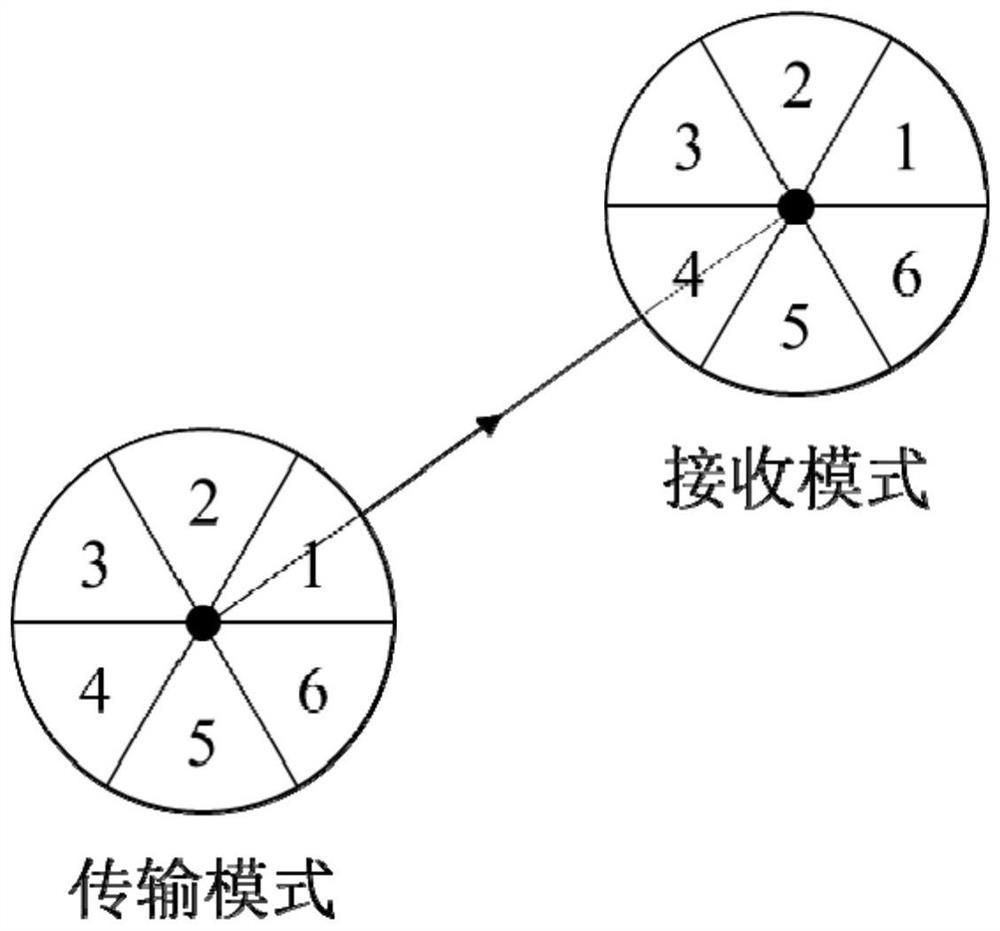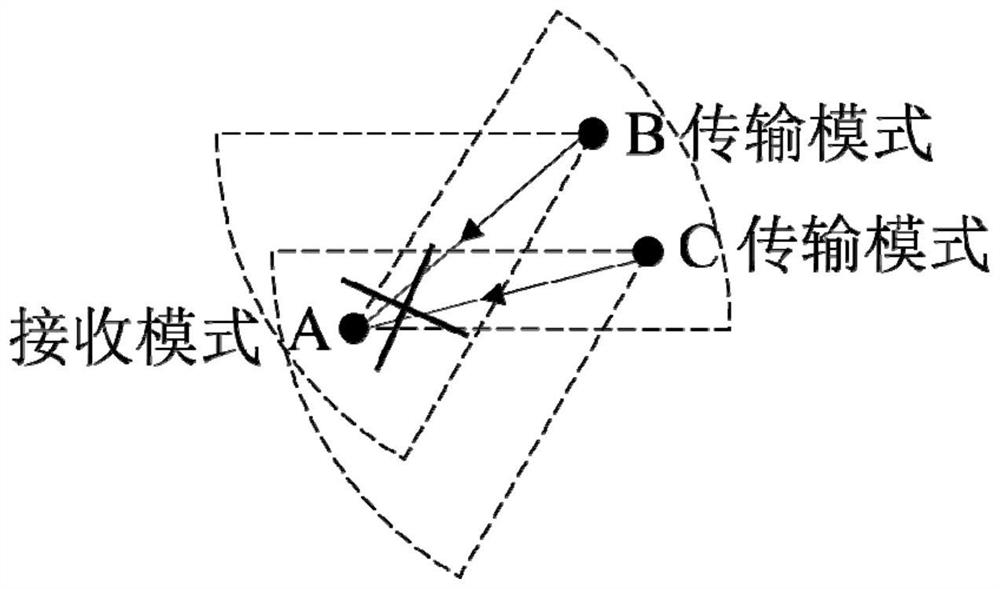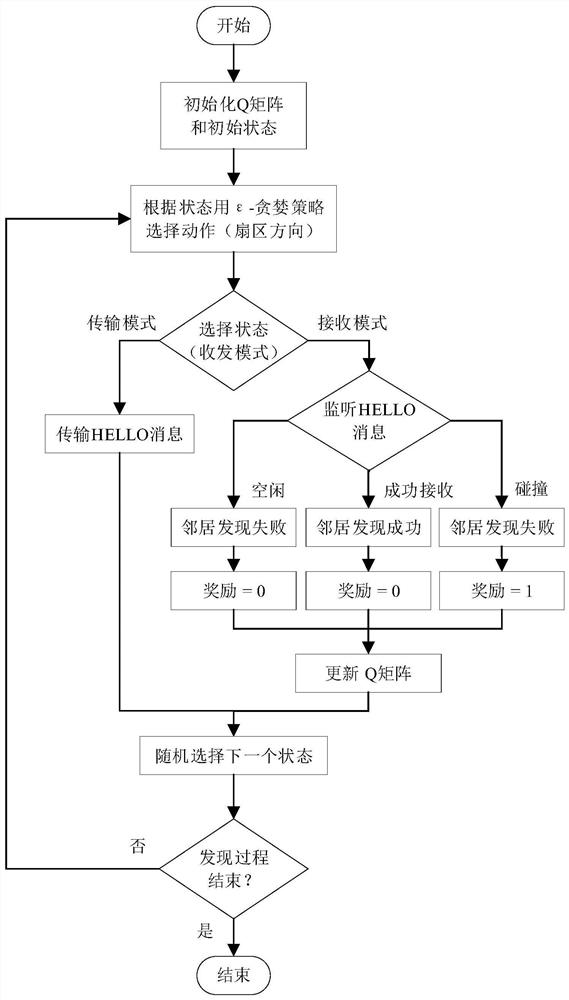Directional antenna ad hoc network neighbor discovery method based on SARSA (lambda) algorithm
A neighbor discovery, directional antenna technology, applied in wireless communication, complex mathematical operations, network data management and other directions, can solve the problems of low efficiency of random algorithms, inappropriate wireless ad hoc networks, increased node power consumption, etc. Large state and action space, low power consumption, and the effect of speeding up discovery
- Summary
- Abstract
- Description
- Claims
- Application Information
AI Technical Summary
Problems solved by technology
Method used
Image
Examples
Embodiment 1
[0035] Example 1, such as image 3 As shown, the present embodiment discloses a method for discovering neighbors in a directional antenna ad hoc network based on the SARSA (λ) algorithm, including the following steps:
[0036] Step 1: At the beginning of the neighbor discovery process, each node initializes its own Q matrix and randomly selects the initial state s 0 (transmit / receive mode) and initial action a 0 (antenna beam direction);
[0037] Step 2: If the node enters the transmission mode, send a HELLO message in the current time slot t; if the node enters the reception mode, the receiver monitors the messages in the current antenna beam direction, if multiple HELLO messages collide here, reward It is 1; if the HELLO message is successfully monitored, then the other party is successfully discovered, and the reward is 0; if no message is heard, the reward is 0;
[0038]
[0039] Step 3: Use the ε-greedy strategy to choose action a for the next slot t+1 (antenna bea...
PUM
 Login to View More
Login to View More Abstract
Description
Claims
Application Information
 Login to View More
Login to View More - R&D
- Intellectual Property
- Life Sciences
- Materials
- Tech Scout
- Unparalleled Data Quality
- Higher Quality Content
- 60% Fewer Hallucinations
Browse by: Latest US Patents, China's latest patents, Technical Efficacy Thesaurus, Application Domain, Technology Topic, Popular Technical Reports.
© 2025 PatSnap. All rights reserved.Legal|Privacy policy|Modern Slavery Act Transparency Statement|Sitemap|About US| Contact US: help@patsnap.com



